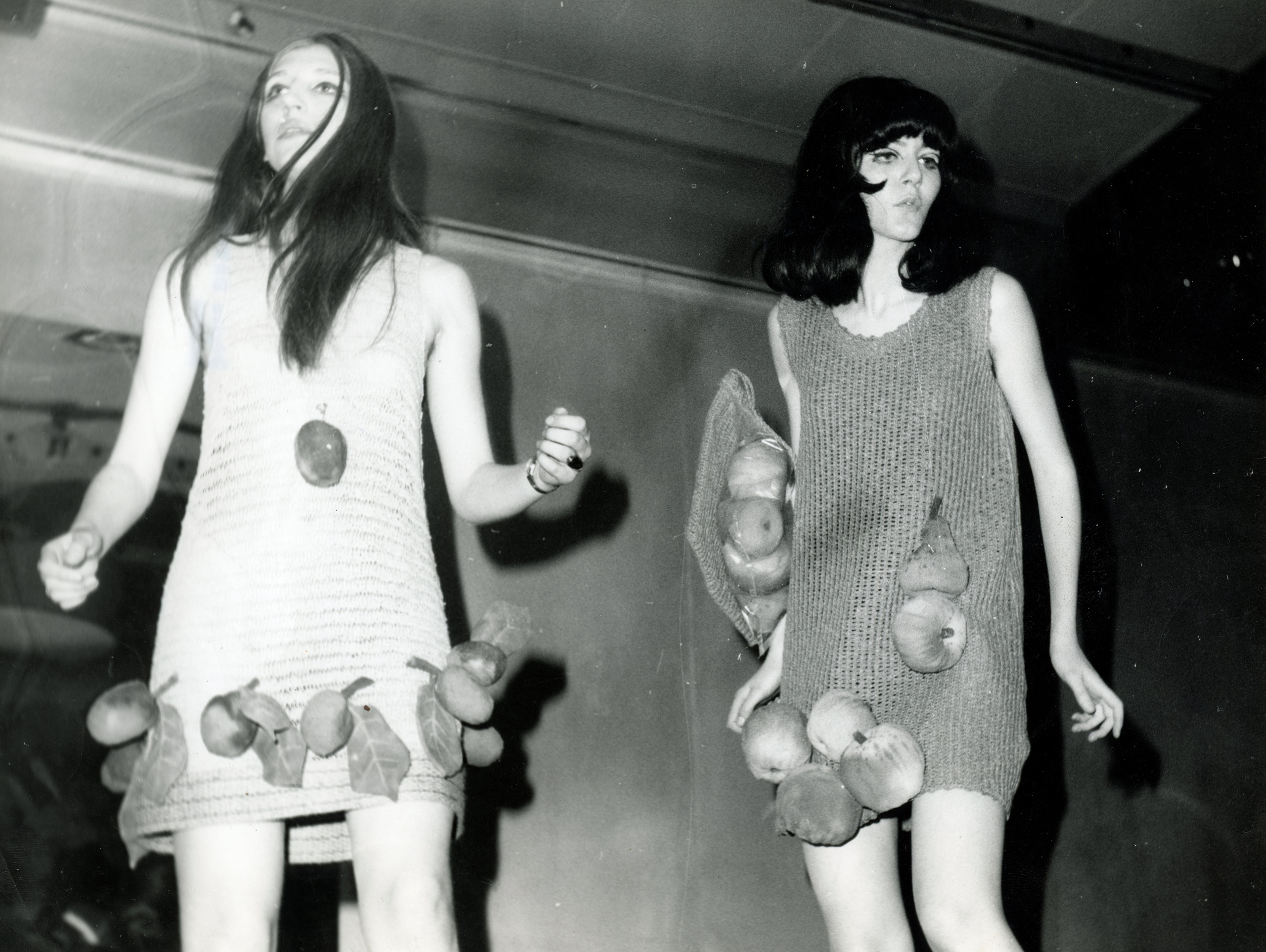ABOUT.
GS EXPLORE is Garage Sale’s section about subcultures, history and fashion.
Airport tray trend: is there still room for authenticity in self-branding?
In the ever-evolving landscape of social media, a phenomenon emerges that explores the relationship between identity and consumption, linking personal image to the art of showcasing everyday objects: the “airport tray trend.”
To fully understand this phenomenon, we need to go back to the "Starter Pack," a popular format that stages a form of self-representation through a selection of iconic items that, when shared on social media, become symbols of one’s identity. This trend suggests that we are defined by what we own and display, that every object in our possession speaks about who we are. Thus, users increasingly embrace the logic of branding, curating their image with aesthetic consistency and deliberate storytelling.
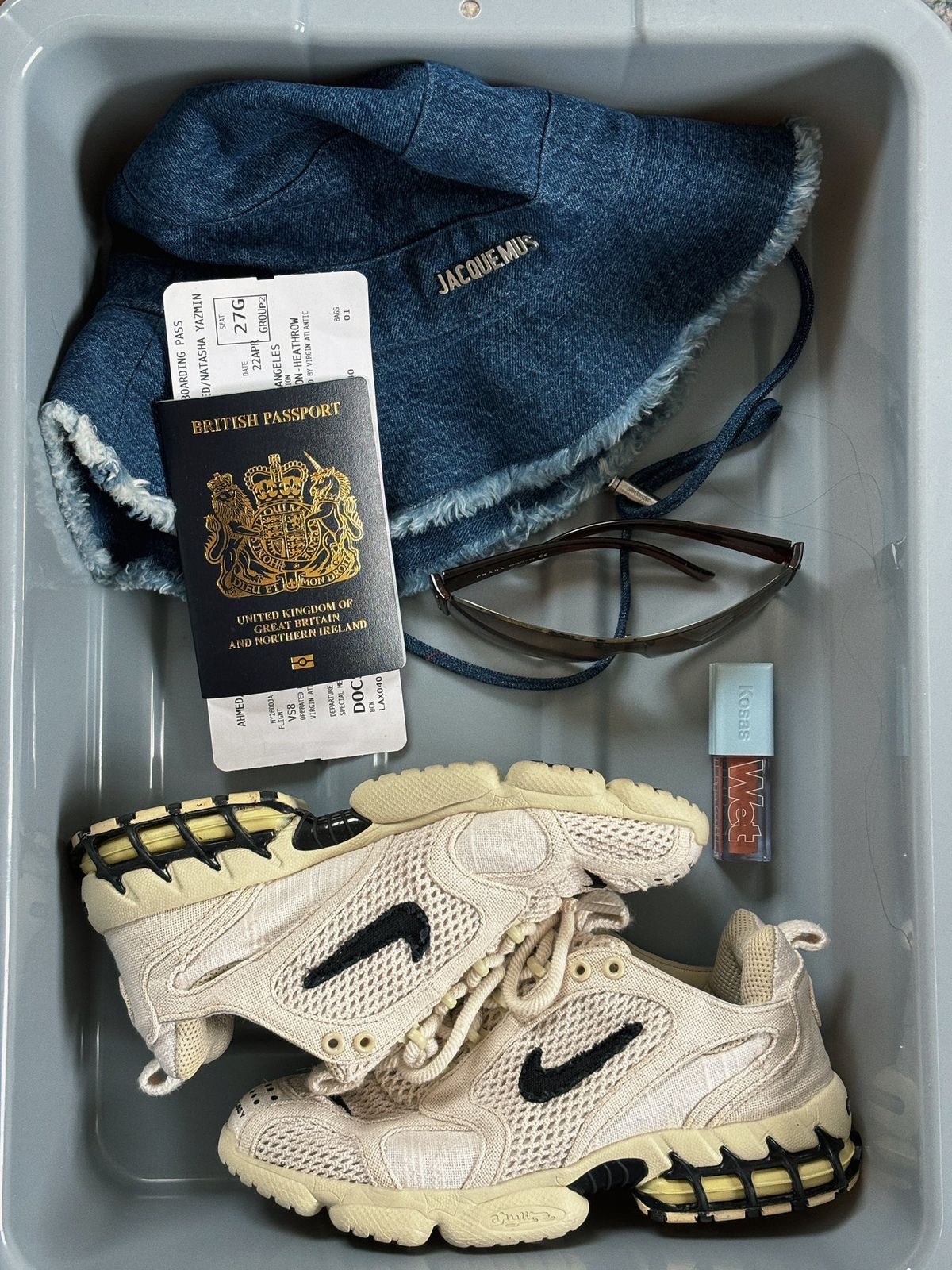


Among the trends connected to the Starter Pack, the formats of "What’s in My Bag" and "My Morning Routine" stand out, where the objects shown—from the current book to the trendiest accessories—become extensions of one’s identity. These seemingly ordinary items are elevated to symbols of status and style, transforming into protagonists of a narrative that tells others who we are, or who we aspire to be.
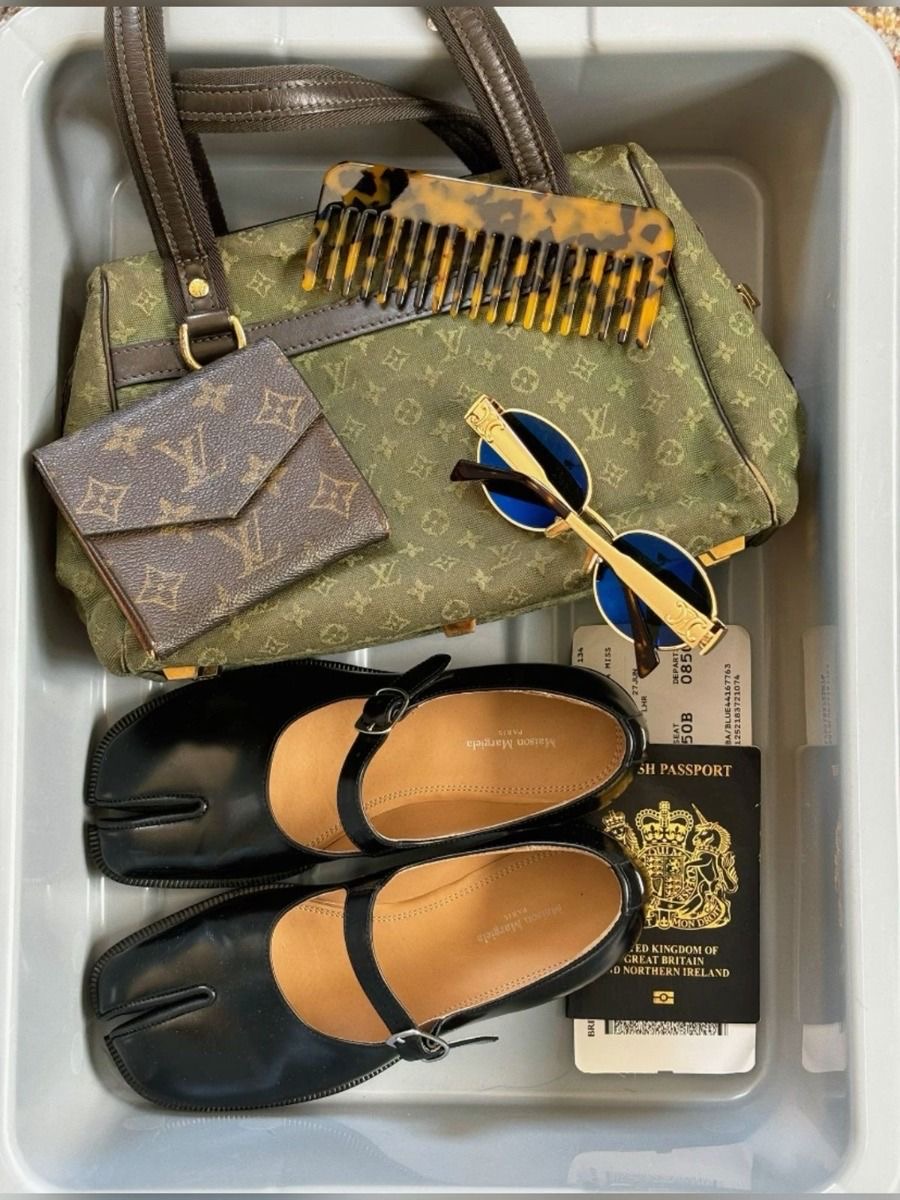
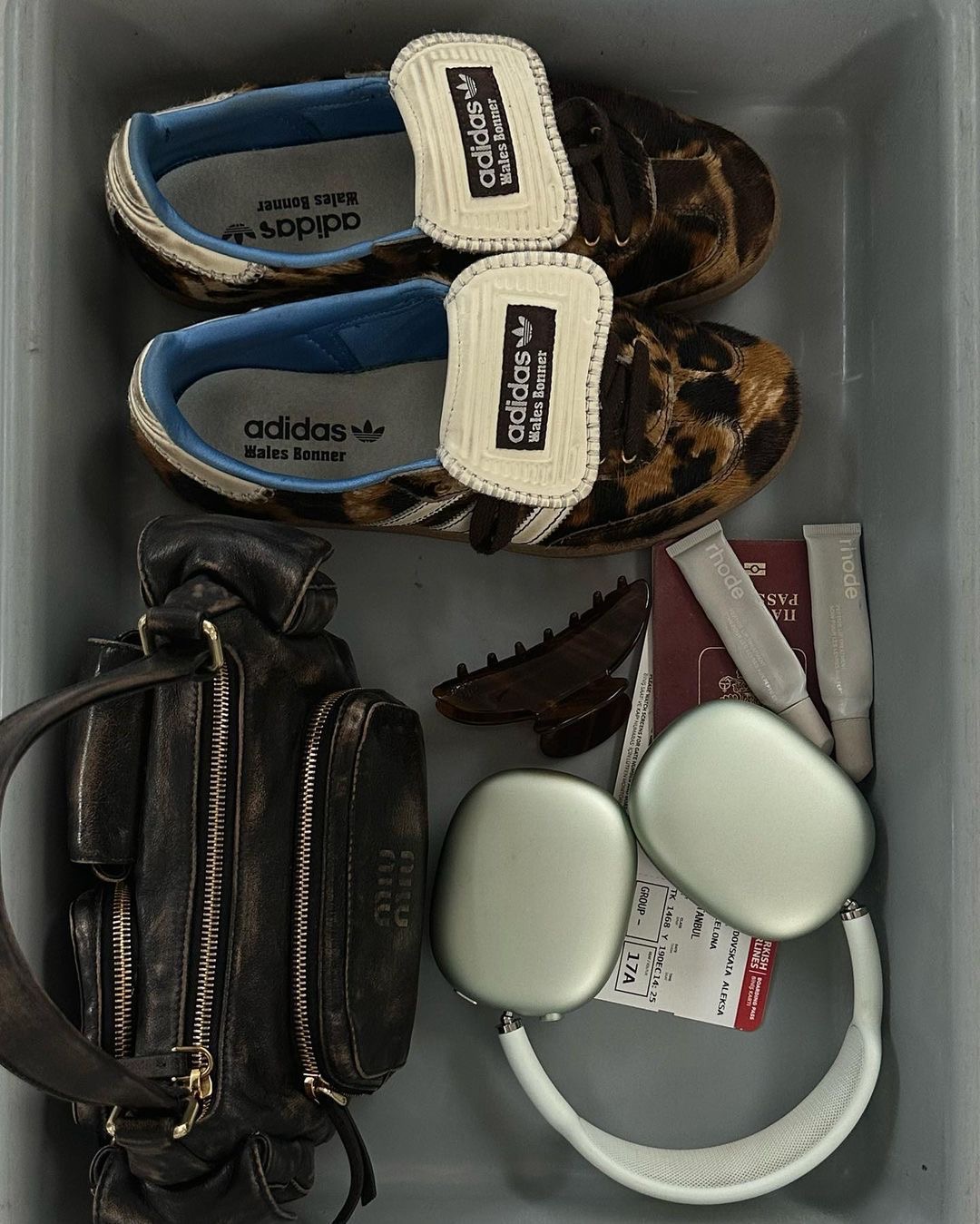
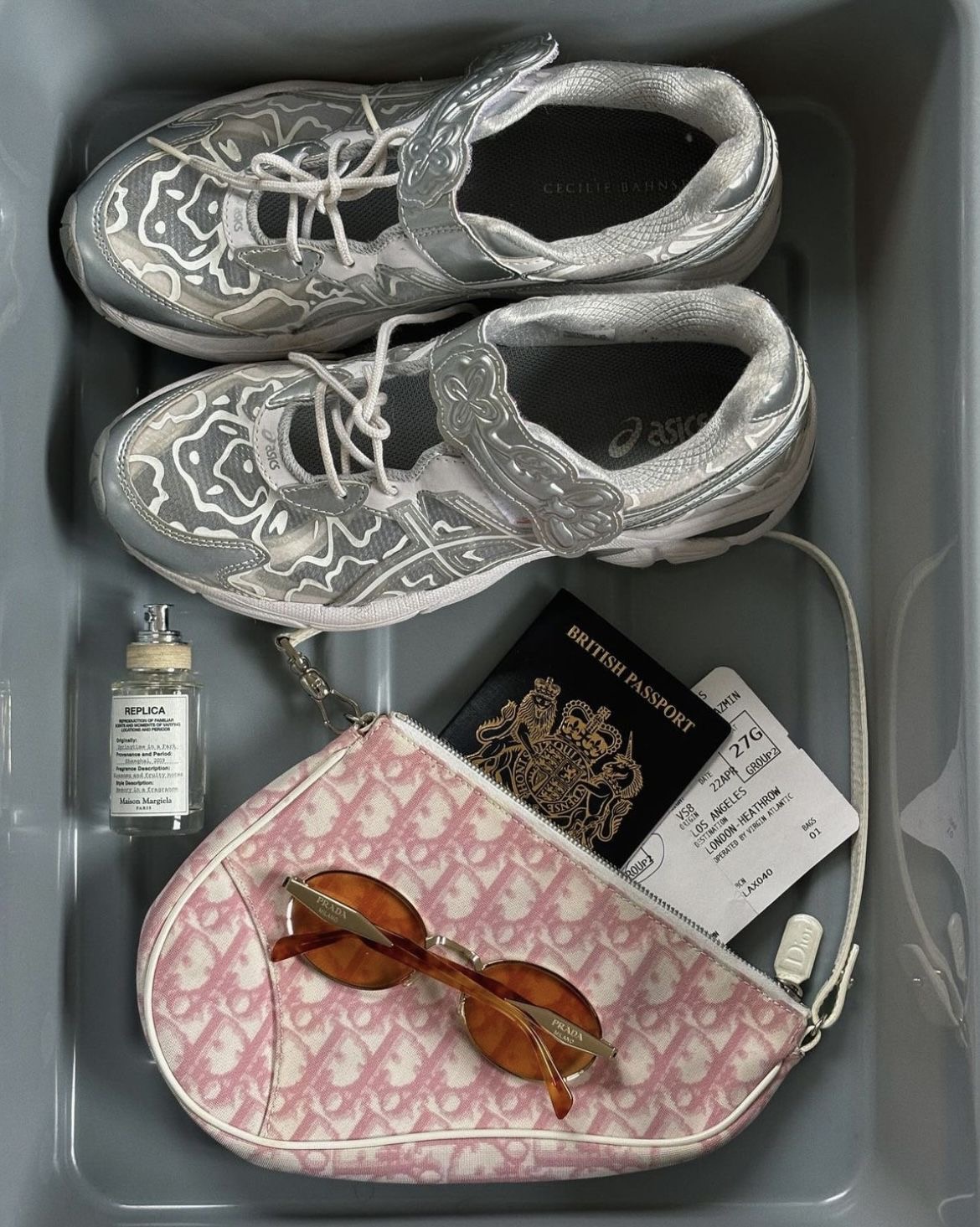
The Airport Tray Trend fits into this picture as a new form of personal branding: at the security check, the items that pass on the airport tray become the perfect occasion to showcase a carefully chosen selection of articles, revealing details of one's lifestyle, social status, and attention to image.
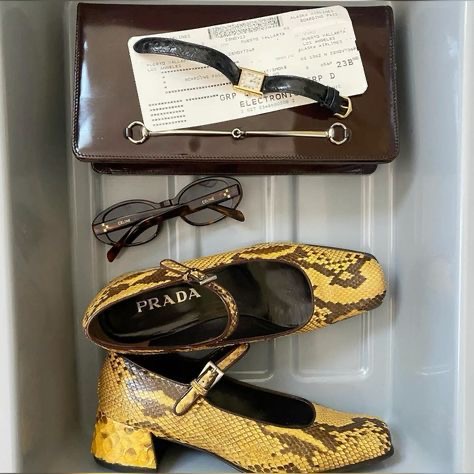
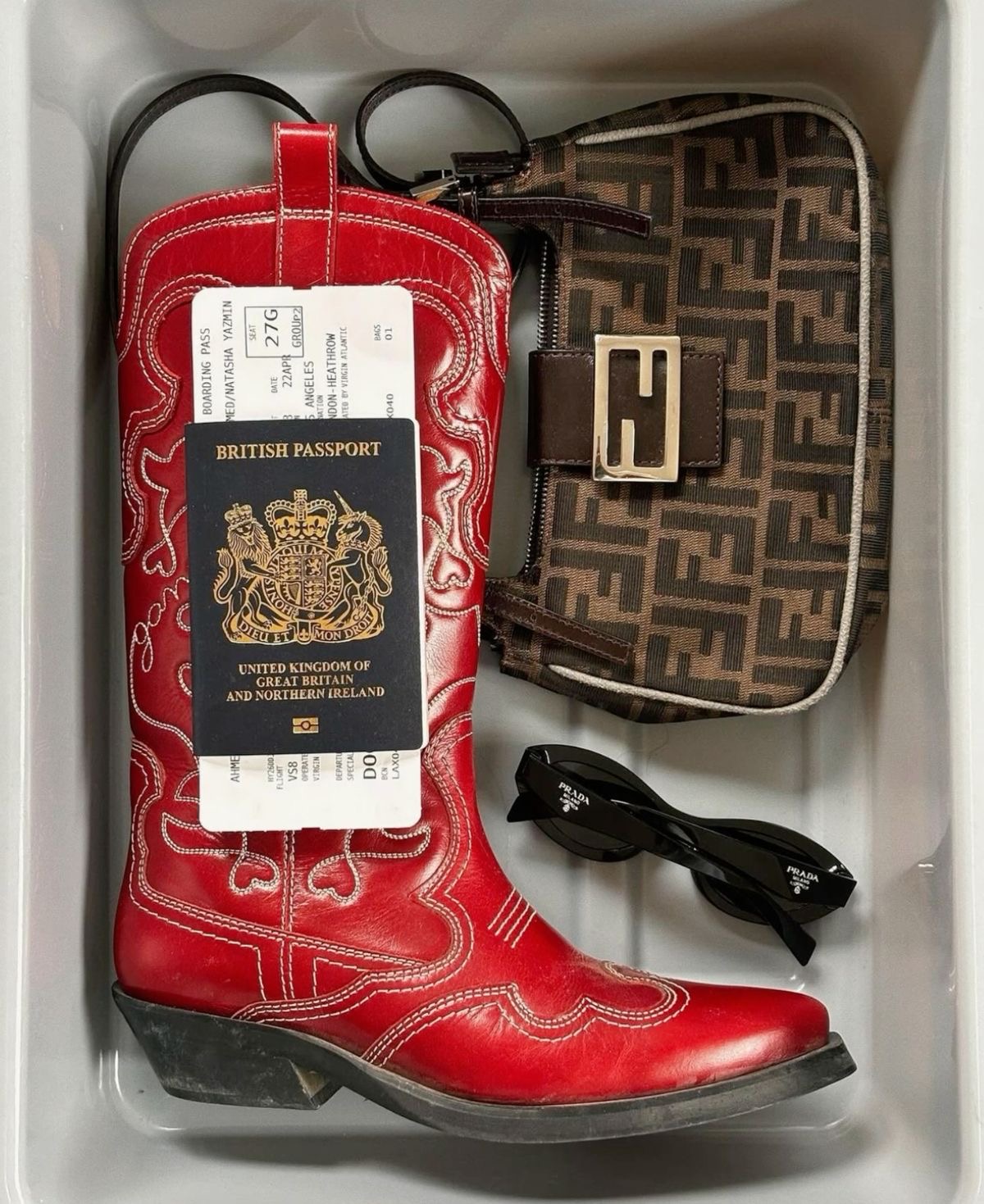
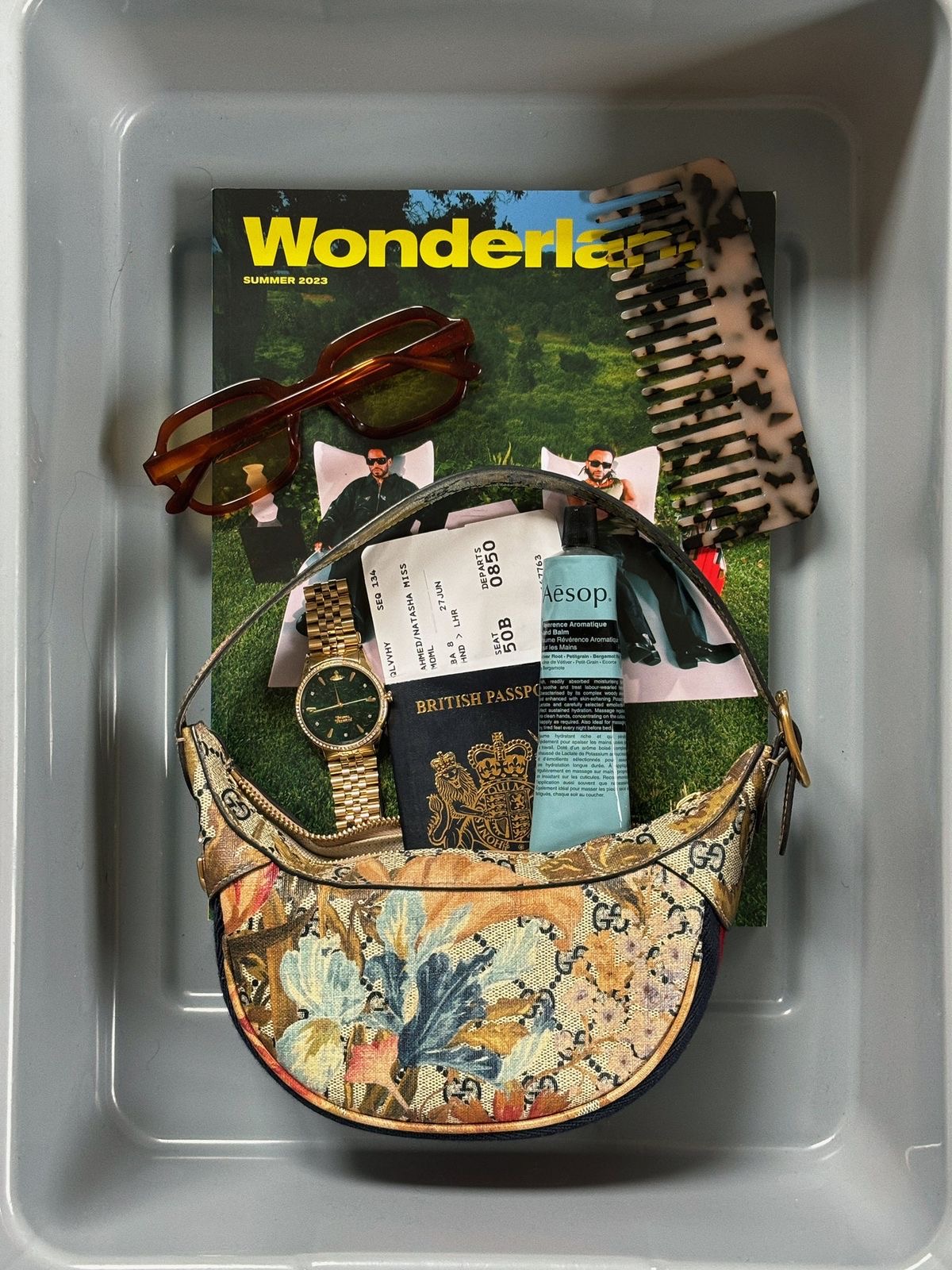
In an era dominated by social media, even the journey itself turns into an opportunity for storytelling. Each accessory, every luxury product, or chic detail captured in a photo can convey powerful messages, from organizational efficiency to minimalist elegance or a preference for comfort. The object becomes a symbol and synthesis of identity in travel, a reflection of the lifestyle one wishes to project.
This phenomenon raises profound questions about our relationship with image and the desire to assert our uniqueness. Does the urge to stand out and emerge really translate into ORIGINALITY, or does it rather lead us toward a new form of CONFORMITY?
In the end, the Airport Tray Trend and other self-branding trends reveal an attempt to elevate oneself through a mix of authenticity and strategy, in a society that rewards aesthetic consistency and identification with certain lifestyles. But ultimately, are we all protagonists in the same narrative of consumption?
Read also

Tora Tora Festival (2001)
The Tora! Tora! Festival was born in 2001. With an itinerant format, it aimed to highlight the Italian alternative music scene. Conceived and organised by Manuel Agnelli, a leading figure in the alternative rock scene and member of Afterhours, the festival aimed to address the lack of attention paid by the mainstream media to the country’s alternative music talents.
Supported by the Italian record label Mescal, the festival ran for five editions until 2005. Each edition comprised a series of concerts held in various cities across Italy and showcasing a range of different artists from the alternative genre. The 2001 edition also passed through Collegno: Motel Connection, Bluvertigo, Afterhours, Massimo Volume, Reggae National Tickets, Shandon and Tribà performed at the Parco della Certosa. Manuel Agnelli, founding member and leader of the alternative rock band Afterhours, was the main creator and organiser.
The idea arose from the need to cope with a certain lack of interest on the part of most of the specialised press, which tended to ignore the Italian alternative music scene. The festival was potentially meant to act as a megaphone of promotion for new bands, conveying music and information in a non-traditional way compared to that always imposed by radio networks, newspapers and television.
Sometimes even managing to act as scouting for the mainstream record industry.
Sometimes even managing to act as scouting for the mainstream record industry. In addition to Afterhours, who took part in all the stages, the other main performers were the Modena City Ramblers, Verdena, Africa Unite, Meganoidi, One Dimensional Man, Shandon, Marco Parente and Cesare Basile.

El Paso (1987 -)
At the end of the 1980s, while Turin was going through a period of social and cultural transformation, 'El Paso' was born (1987).
Located in Via Passo Buole - hence the name - 'El Paso' quickly became a reference point for the city’s burgeoning underground music scene. The space was not just a place to dance, but a haven for subcultures, where people from different backgrounds gathered to celebrate music, art and individuality.
Local and international bands of various genres, including punk, new wave, post-punk and electronica, often with experimental and avant-garde sounds, such as Mano Negra and the American The Offspring and NOFX, as well as numerous historic groups from the international hardcore and post-punk scene, including Fugazi, Youth Of Today, MDC, No Means No, Ratos De Porao, SNFU and Jingo De Lunch, performed and emerged at 'El Paso'.
The significance of 'El Paso' goes beyond music. The space is also a hub for the city’s independent magazine and fanzine culture. Writers, photographers and emerging artists found a platform to express their ideas and views, covering a wide range of topics, from music to social issues.
Over the years, 'El Paso' has faced its share of challenges, including financial difficulties and the changing cultural landscape. Despite these obstacles, it has remained an enduring symbol of Turin’s underground spirit.
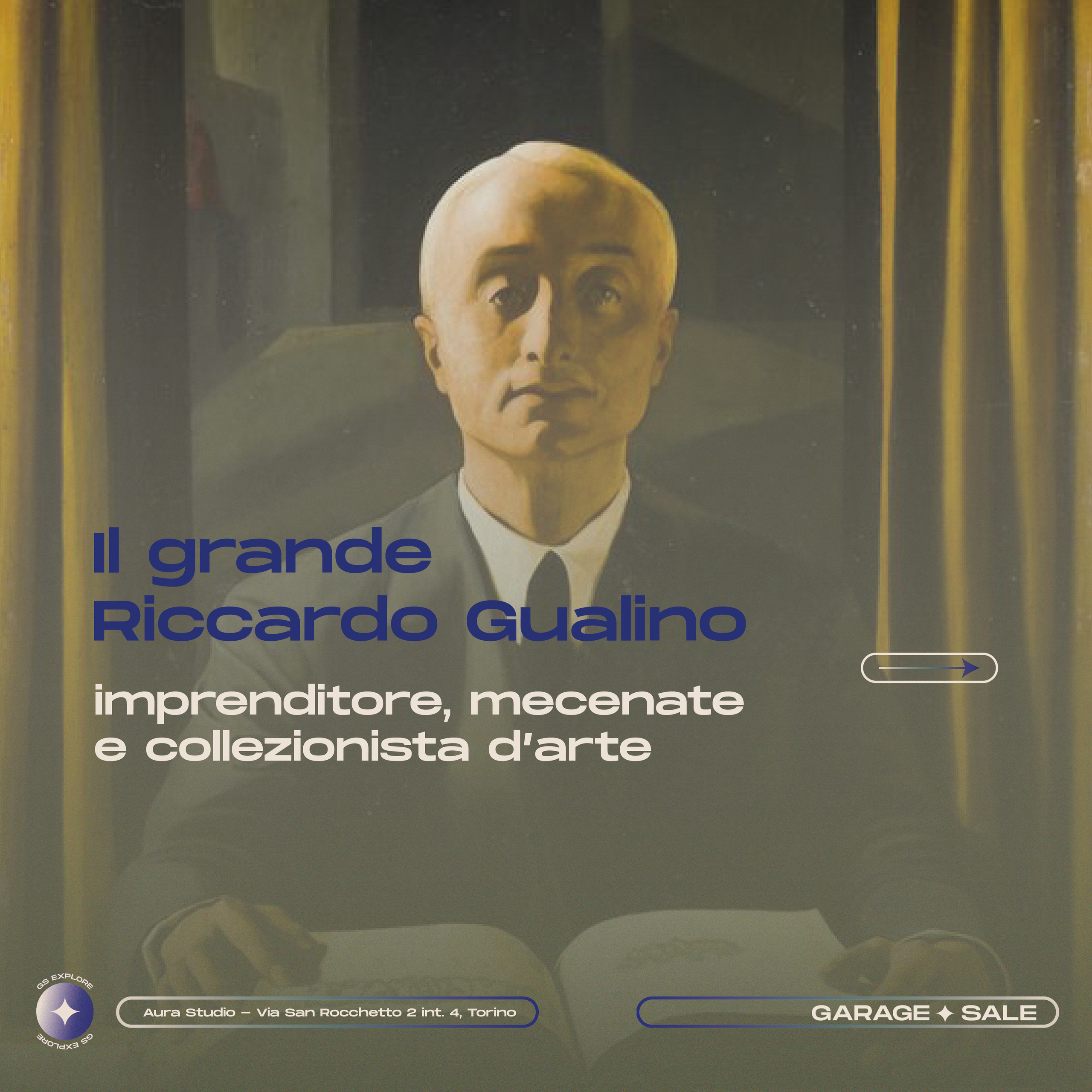
Riccardo Gualino (1879 - 1964)
Riccardo Gualino, an influential and enigmatic entrepreneur, patron and art collector, was born in Biella on 25 March 1879.
As one of the first Italian film producers, he paved the way for modern Italian cinema by founding the production companies Snia, Unica and Lux Film.
Within Turin’s cultural salons, Gualino and his wife Cesarina were two central personalities. Their residence in San Salvario houses a unique work of art: the Teatrino. Its walls host choreographic performances by Bella Hutter and Raja Markman and their school, sometimes joined by Cesarina Gualino herself, with Felice Casorati’s brushstrokes adorning the interior. Unfortunately, the theatre met its tragic end during the devastation of World War II and was never rebuilt.
Working with the famous art critic Lionello Venturi, Gualino curated a priceless collection. At the height of the fascist regime, the Royal Museums of Turin and the Bank of Italy became its custodians. Among the gems, a masterpiece emerges: Venus by Sandro Botticelli.
An anti-fascist, visionary, successful entrepreneur, his life was studded with important figures: Luigi Pirandello, Edoardo Agnelli, Pietro Badoglio, Sir Winston Churchill, who was hosted at Villa Altachiara on several occasions. Its influence, secrets and dark alliances continue to stimulate the imagination, inviting us to discover the truth buried beneath layers of mystery.
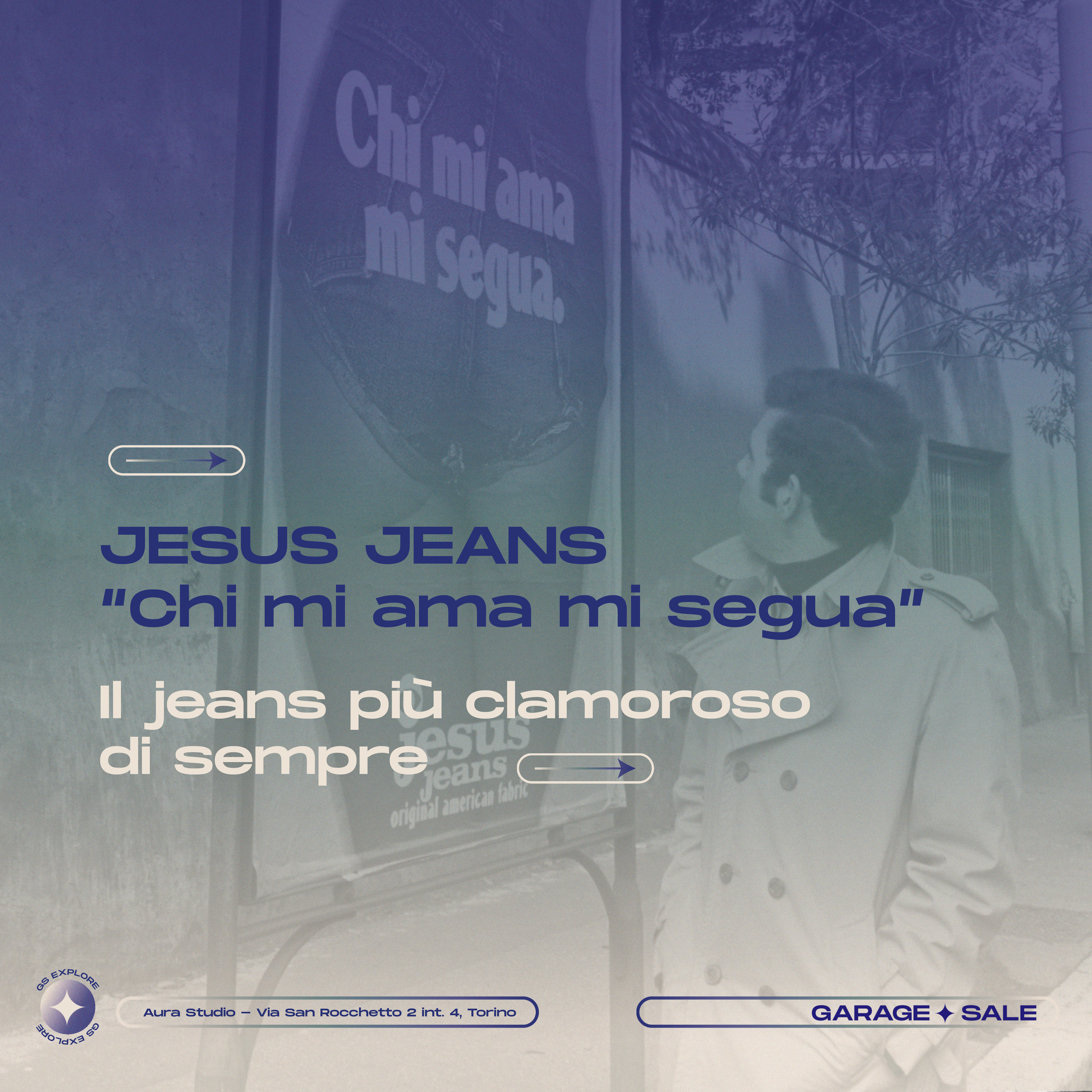
Jesus Jeans
In the 1970s, Jesus jeans became a cult garment and one of the most important advertisements in Italian history, embodying the rebellious spirit of the time.
The provocative and irreverent talent of Oliviero Toscani and the ironic creativity of Emanuele Pirella contributed to its success.
The first Italian jeans collection was launched in 1971 by Maurizio Vitale, at a time when jeans symbolised a revolution in fashion and liberation from moral constraints.
The name 'Jesus jeans' was accidental, inspired by Oliviero Toscani’s encounter with a billboard of the musical 'Jesus Christ Superstar' in New York. The iconic 'Jesus jeans' advertising campaign, 'Chi mi ama mi segua' ('who loves me, follow me') caused a real scandal, leading to censure by the judiciary, politics, culture and the Church, because of the juxtaposition of the sacred and the profane, between the provocative photos and the 'sacred' quotation (which was not sacred, because it turned out to be a phrase uttered during a battle by the French king Philip the Fair).
The following day, posters and photographs relating to Jesus Jeans were seized.
Even Pier Paolo Pasolini, in the Corriere della Sera, publishes a commentary entitled «The crazy slogan of Jesus jeans»; he prophetically defines this advertisement as «the new spirit of the second industrial revolution» anticipating the values that were changing.
The advertising campaign, with provocative photos by Toscani and slogans by Michael Goettsche and Emanuele Pirella, caused a scandal, provoking censorship, criticism by various institutions and public debates.
Despite the controversy, Jesus jeans became a symbol of rebellion and youth, capturing the spirit of the social and sexual revolution of the time. The campaign is considered a breakthrough in the history of advertising, exploring the impact of innovative communication techniques.
The visionary intuition of Oliviero Toscani, the creative irony of Emanuele Pirella and the beauty of Donna Jordan (Andy Warhol’s muse at the time) helped make Jesus jeans a cult item in the history of denim.
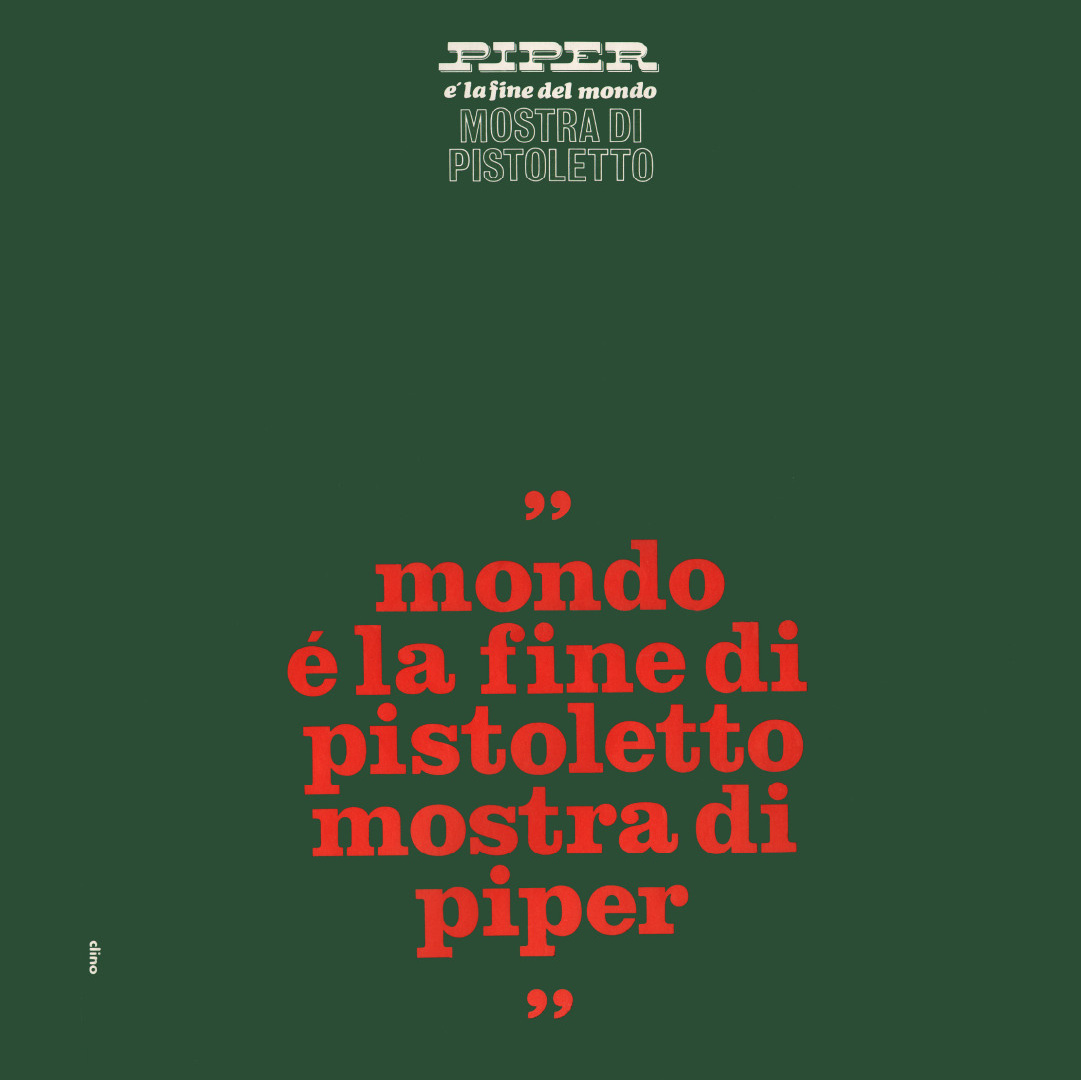
"The End of Pistoletto" (1967)
6 March 1967, Turin, Piper: in the modular and convertible artist’s disco, Michelangelo Pistoletto, exponent of Arte Povera, enacts his first public action.
If the club’s slogan was 'Piper is the
end of the world', with an ironic play on words Pistoletto entitled his performance 'The end of the world'.
performance 'The End of Pistoletto', and from that moment on, the magic begins.
Along the walls are lined up huge mirror paintings
lined along the walls are huge mirror paintings of friends and artists (Piero Gilardi, Clino Trini
Castelli, Faustina Piacentino, Graziella Derossi, great artists
avant-garde artists in their own right and frequent visitors to the Piper).
Edges, arranged along the dance floor, thirty people on their faces
wear a mask reproducing Pistoletto’s features, and in their hands they hold a reflective
hands hold a reflective plate: it not only reflects, but also produces sound.
sounds, while music continues to flow throughout the action,
Pistoletto exhibits 'The Silver Well', a cylinder one metre high in which one can
and see one’s own image reflected in a mirror at the bottom.
With «The End of Pistoletto», the public becomes the protagonist. 1960s the disco became an object of interest for architects and designers. A modular and convertible space, it could be programmed to according to the different functions of use housed within it: dance concerts, theatre shows, performances, exhibitions and fashion shows.
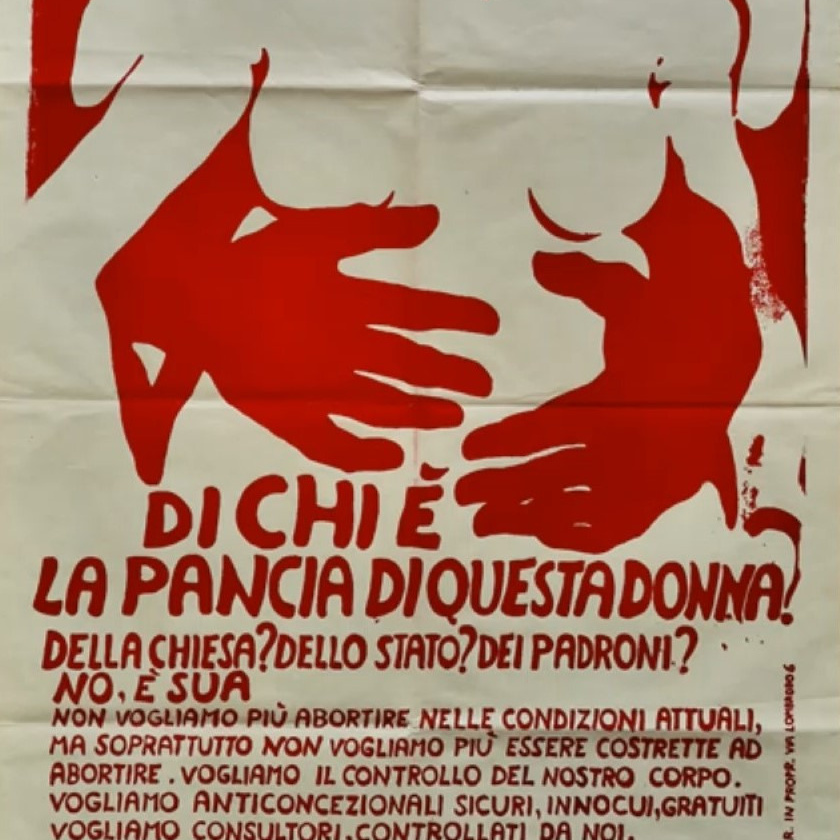
Feminist Movement in Turin (1970-1980)
In the 1970s, the second feminist wave swept Italy, inflaming streets and squares everywhere.Turin among the protagonists, together with Rome and Milan, of movements of the feminist struggle and the inalienable rights of women.
Since the late 1970s, the movement has espoused fundamental issues: rights of self-determination over the body and maternity, health, violence against women, work and labour, peace, women’s politics.
These struggles were accompanied by often self-produced and cyclostyled posters, which are striking for their essential style, the simple and clear language, and a vision that is entirely revolutionary and transgenerational vision to represent the right to self-determination and an egalitarian life.
One example is the
manifesto 'Away with the Violent' (1979), produced for the collection of signatures for
a law against sexual violence; or 'Motherhood must be a choice' (1979).
In support of the campaign for law 194 on the voluntary interruption of pregnancy on the occasion of the referendum which called it into question (1981). It perfectly represents the claim to the right of self-determination of one’s own body the manifesto 'Whose belly is this woman’s' (1973), to invite a public debate for women to talk about the right to abortion.
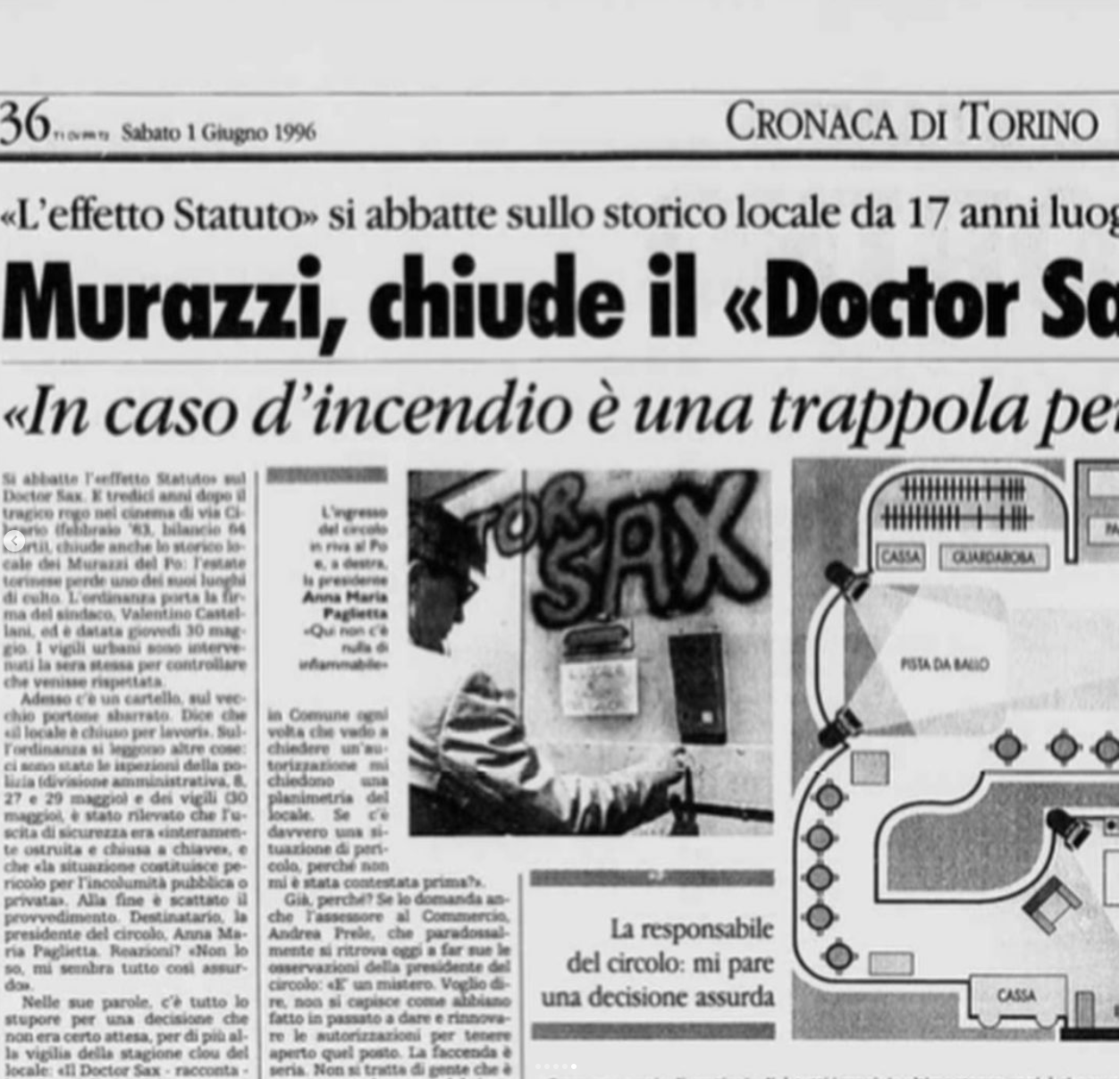
Turin underground (1990 - 1999)
There is a measured Turin, punctuated by factory work, plastered, Savoyard.
This grey sky has been germinating for several decades now the Torino
Under this grey sky, the Torino Underground, which in the 1990s found its maximum expression.
Through the symbolic clubs of those years, many young people found an escape route into nightlife: along with the clubs of the 1980s, such as the Polaroid, the Tuxedo, Studio 2 and the Big Club, new faces arrive in the night, who decide to give a new voice to the city.
The Murazzi are an example of this: like Doctor
Sax and Giancarlo who, with avant-garde music, a language without
frills or ambiguity, dilated hours and timeless places, tell the story of an entire
an entire generation of Turinese people. The music is experimental, the audience
is varied and takes in all social classes looking for a way out.
way out.
These were the descendants and heirs of a punk spirit that originated in the hardcore Turin of the late 1980s, which flowed in the social centres like El Paso and the Prince, which saw the beginnings of bands such as Negation, Panic, Decline, Nerorgasmo.
With a decade that the world with the Italy of the 1990 World Cup, Turin was trying to a spatial dimension that did not try to emulate foreign models, but rather models, but was creating its own identity; a city that after the sunset was learning to mingle without the barriers of everyday life.
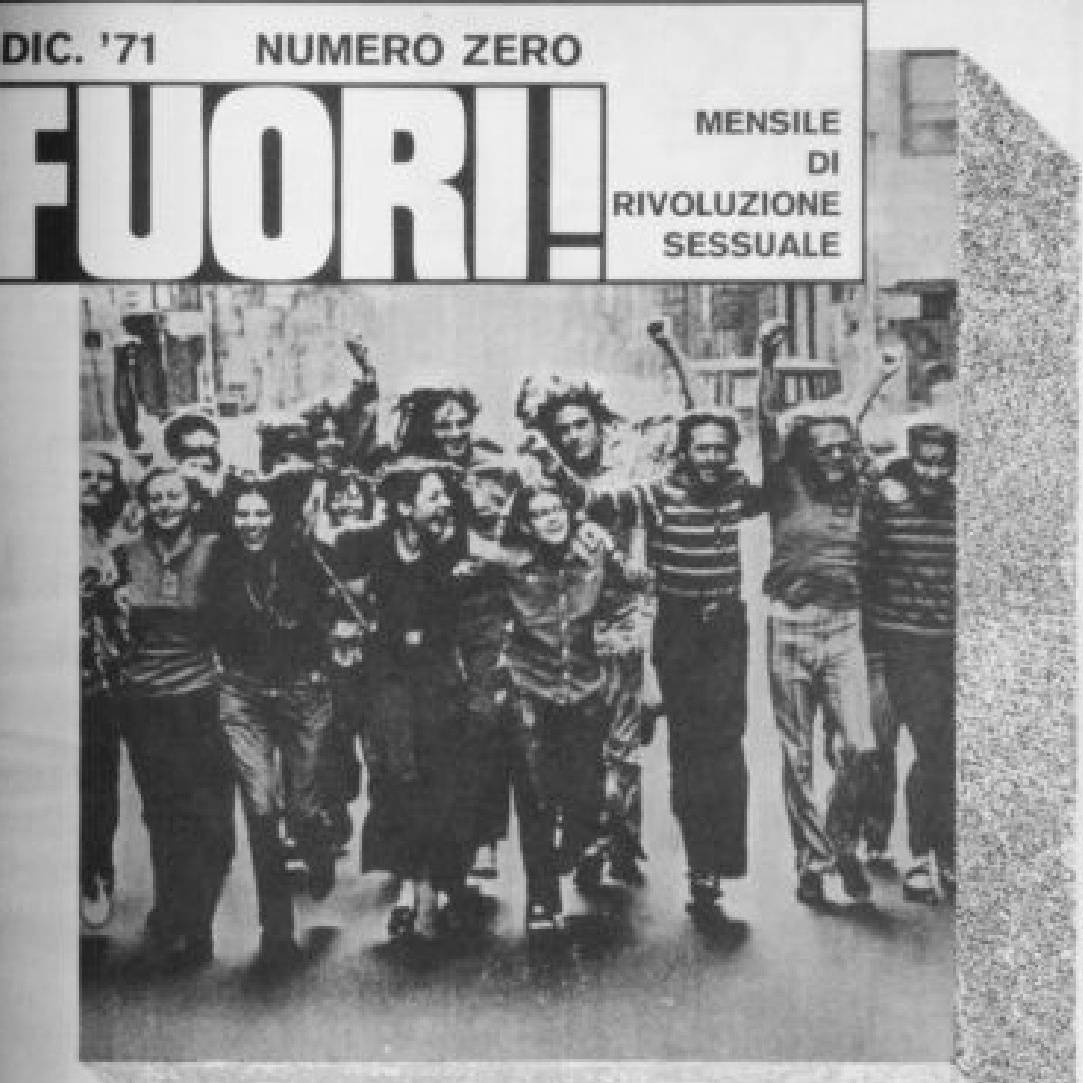
Counterculture and Underground Press (1968 - '77)
The roots in the underground press, born with the cyclostyled newspapers of the beat groups, and its exhaustion in the exorbitant production of sheets of the '77 movement, brings to light a mosaic of publishing experiences capable of restoring, despite the aesthetic differences ideological and of means, the common spirit of an entire generation as well as its parable of hopes and disillusions.
The experience of the Italian underground press lasted little more than ten years, influenced initially by international movements such as Dada, the Provos and the American Beat, it shines its own light with magazines that manage to the limelight with magazines that manage to bring another language, another graphic world of poetry, claims, comics and music.
Although
often forgotten, Turin was a great experimental laboratory
for fanzines, non-professional and unofficial publications, born
subcultures and underground socio-cultural movements.
Movement’s publications, dealing mainly with pacifism conscientious objection, free sexuality and ecology, are characterised by a poor appearance, given not only by the quality of the paper printing but also by the simplicity of the layout and lettering because often those who wanted to have a voice, had to create their own their own space, produce it for all intents and purposes: this is where were born «Uomini» («Men» - 1967), «Mai» («Never» - 1968), «Fuori» («Out» - 1972), «Io sono Curiosa» («I’m curious» - 1972), «Vedo Rosso» («I see red» - 1973), «Tampax» (1974), «La vecchia talpa» («The old mole» - 1975), «Lambda» (1976); all cyclostyled, self-produced and countercultural paper products from Turin.
A democratic instrument, stubbornly paper-based and free, without mediations or rules of any kind that manages to enthuse anyone who approaches it. approaches it.
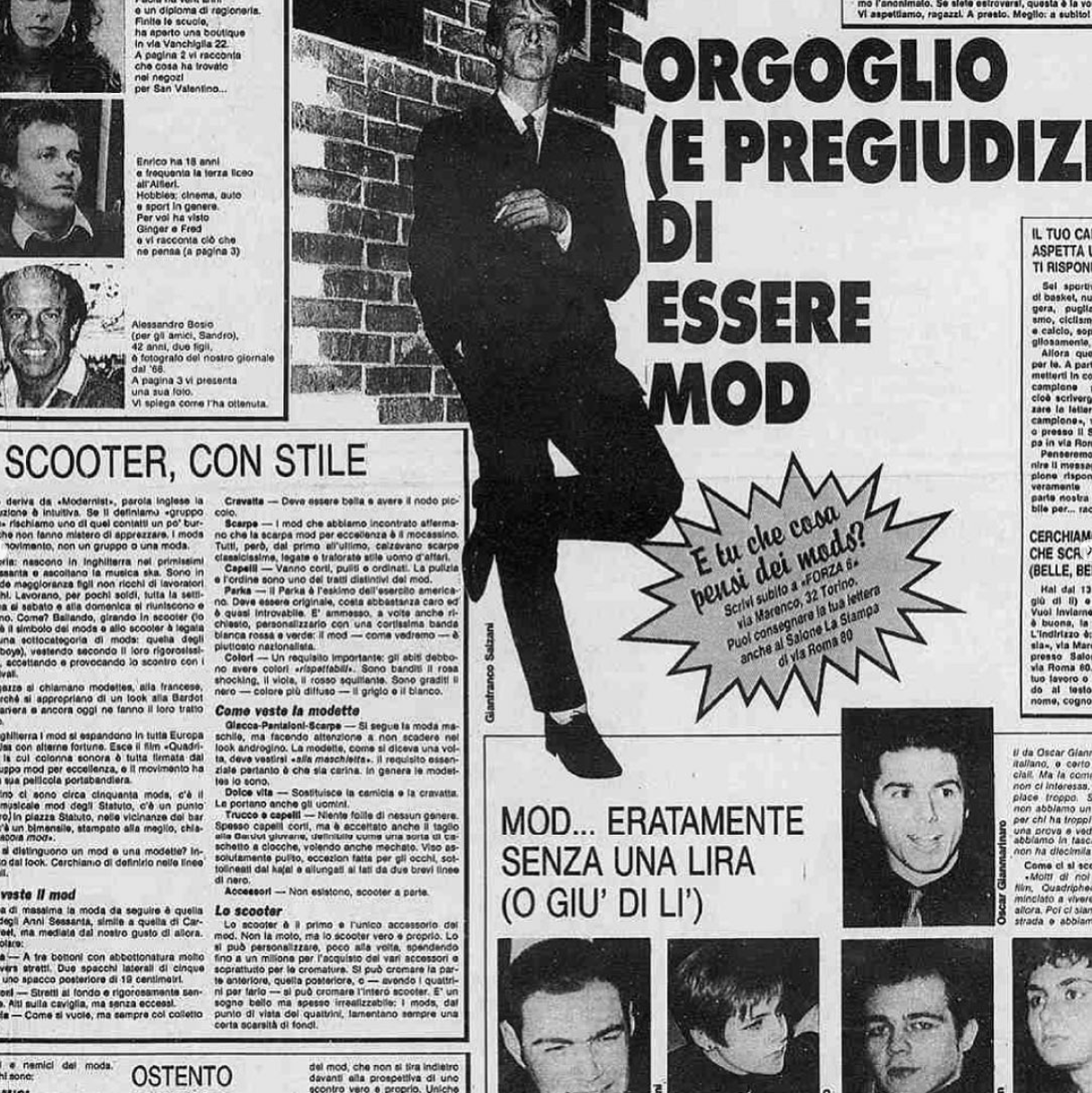
Mod Generation
In the late 1970s and early 1980s, the Mod movement landed in Italy.
Born in England, it was a London social movement of the late 1950s with which the young working class wanted to react to the racist and elitist bourgeoisie by becoming cool, non-conformist and popular.
It was to oppose sobriety and morality.
In Turin it exploded with the release of the film Quadrophenia (Franc Roddam, 1979):
«it was a mystical blow, those boys who lived, gesticulated, danced in the screen gave me a shock, it was as if until then I had lived a life that was not mine […] one day opening my parents' wardrobe I saw a grey suit of my father’s from the 1960s, three buttons, trousers without pences, I wore it with elegant black shoes and went to the piazza among my lifelong friends who looked at me like an alien.»
With a new French line haircut, tailored suits with tight three- or four-button jackets and trousers that never ended more than two centimetres from the shoe, they used a scooter as a means of transport and a parka to protect their tailored suits during scooter rides, they were the quintessential teenagers: spending money on themselves, not hoarding it for trousseau, married life, a conventional existence.
Mod fits into a context in which Turin was a pioneering time, where clubs hosting 'alternative' evenings were very rare, and opportunities for aggregation (subcultural or otherwise) had to be created from scratch. Thus, in the early 1980s, the idea was born for Turin mods to meet in Piazza Statuto, going back to the origins of subcultures in Italy. And it was precisely those small groups that populated Turin in those years, challenging each other to 'defend' their squares, that identified themselves in this new movement. And within that scene came bands that symbolised those years: first of all Statuto, then The Mads, The Five Faces, The Coys, Made, I Rudi. It was 'a clean way of living difficult circumstances' that was ethical and philosophical, even before being aesthetic.
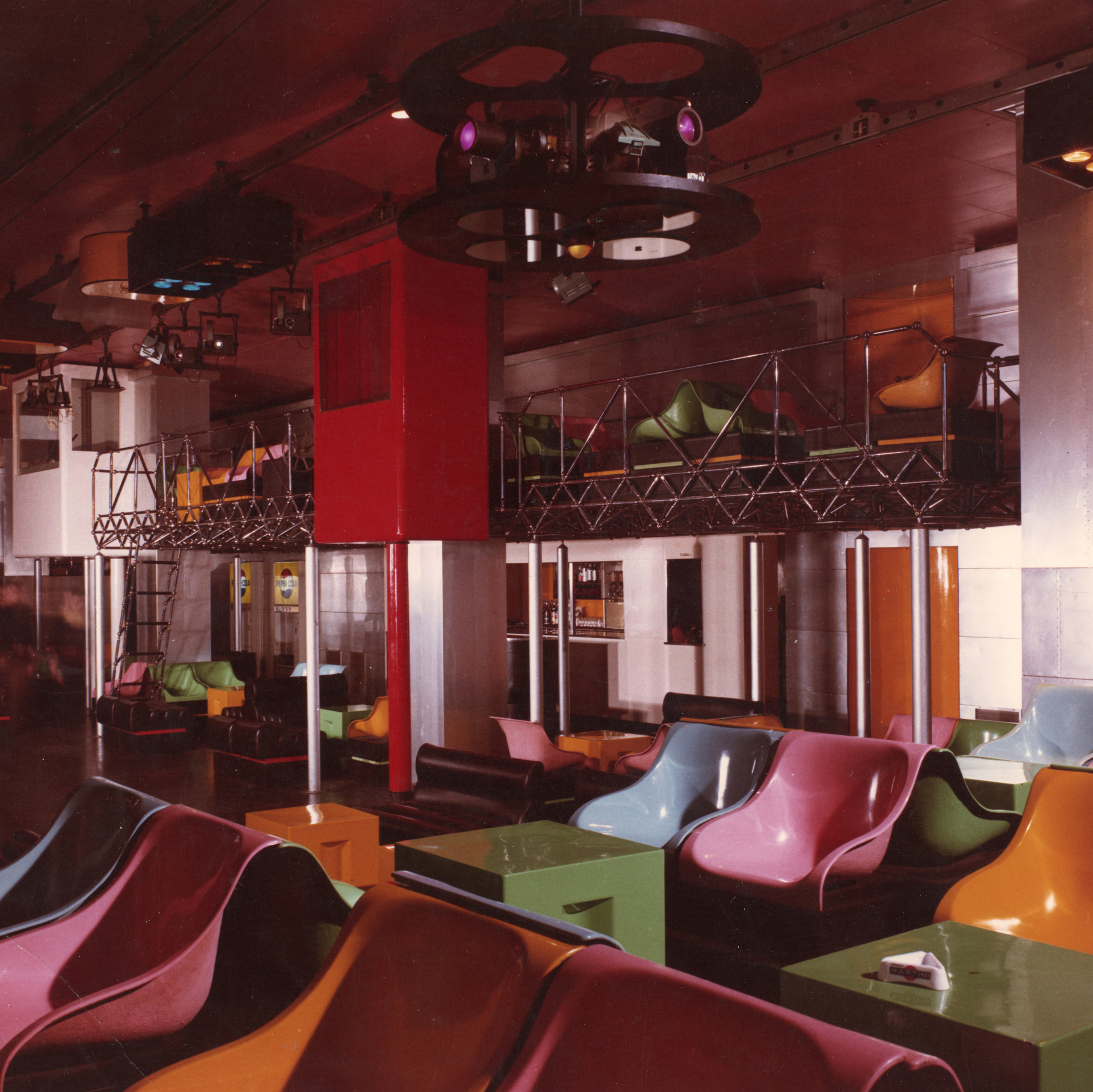
Piper of Turin (1966 - 1969)
In height of the Beat Generation, a discotheque opened in Via XX Settembre designed in the 1960s by Piero Derossi with Guido Ceretti and Riccardo Rosso: musicians, composers, artists, designers, through the Piper, marked the history of a city and a generation.
The Piper was endowed with a multifaceted and transformist, which was reflected in the mentality of its frequenters: the key words were dynamism, transformation, change. Nothing was certain, everything was movement and fluidity between different fields of knowledge.
Bringing together pop culture and underground culture, theoretical research and
practice.
The interior spaces were transformable, In the central rail
ran a 'light machine' designed by Bruno Munari in a longitudinal direction, which projected different lighting effects onto the walls.
Drinks were distributed by means of self-service type dispensing machines. All around the perimeter rails run at different heights, from which any type of object can be hung.
In addition to the Piper in Turin in the same period were the Piper in Rome, L’Altro Mondo in Rimini and the Space Electronic in Florence.
The discotheque has always been a place of free expression, where
music merges with movement, of sensory involvement.
But
the disco of the 1960s and 1970s was also a place in which to practice and
experiment collectively, in which to act also on a political level.
New artistic currents were born in Italy and abroad (Arte Povera, Programmed Art, Pop Art, Land Art, Conceptual Art) and the new generations tended towards a cultural revolution, animated by the student movements and political struggle, by the claim sexuality and the desire for change. Driven by the need to disrupt hitherto dominant tastes, customs, rhythms and paradigms, the projects such as the Piper in Turin presented themselves as moments of evasion from conflictuality, places of exchange and spatial experimentation.

